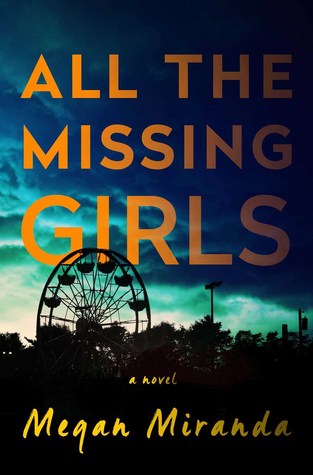A story told both backward and forward, ‘All the Missing Girls,’ exemplifies the importance of structure to the reader’s experience. PHOTO CREDIT: Goodreads.com
Megan Miranda’s debut novel “All The Missing Girls” is a perfect example of how the structure of a story can completely change the readers’ experience.
The story of “All The Missing Girls” revolves around exactly what the title suggests. It has been 10 years since Nicolette “Nic” Farrell left Cooley Ridge, the town where she grew up, where she walked away from everything and everyone in her life: her boyfriend, her family and most prominently, the mystery of her best friend Corinne’s disappearance.
But when she gets a call from her brother telling her that her father’s health is in jeopardy, she puts her life in Philadelphia on hold and rushes back home to care for him. After only a few days of being back home, another girl goes missing, causing Nic to take it upon herself to figure out what people know about the newest missing girl, along with her dear friend Corinne. In order to do so, Nic delves into her own past and realizes just how naive she has been about her friends, family and hometown.
The initial premise of the novel is intriguing and the fact that it is told within the genre of a thriller means that action is much faster, with split second decisions made by characters having more weight to them.
Most of Miranda’s adult novels fall within the thriller genre and this is because, according to Miranda herself, you can get much closer to a character and get deeper into their headspace when things are moving fast and you find yourself relating to their intense situation and sudden struggles.
“Every phrase or interaction can carry the meaning of something else, and I think these types of stories can bring the reader even closer, into a more active role,” Miranda said.
The prose is detailed and specific, told by an author who clearly has experience in the field of fiction writing. It is rich with accurate metaphors and apt comparisons, and the first person narration instantly puts the reader into the mindset of our main character. The novel also handles themes of change and how a person can transform from who they are into who they want to be which leads to a final few pages that are both oddly sweet and surprisingly chilling.
The action is quick and the stakes are high throughout the entire story, but what really makes this piece worth seeking out, as I hinted at earlier, is its structure. “All The Missing Girls” is told both forwards and backwards. We start out on day one with Nic receiving the phone call about her father, then jump to day 15 at the peak of the climax, then work our way back and find out how we got to that moment. Some might think that the ending would be spoiled for us by page 50, seeing as how we jump right to the end and work our way back from there. But just like any chronological narrative, we don’t fully realize what is going on until the end. And once you do, the entire previous 350 pages will be viewed in an entirely different light. Trust me.
The only somewhat comparable piece of media I can think of to explain how this structure works without spoiling the ending for you is the 2019 murder mystery film “Knives Out.” That film also initially functions as a standard muder mystery but quickly shifts into a different light and becomes more so about the guilty party trying to cover up what they did. The audience is shown what happened fairly early on and can view the rest of the movie from a different perspective because of this change in structure.
While the reveal in Miranda’s novel still comes at the end instead of the end of the first act like in Rian Johnson’s film, the story still drastically changes by the time we realize what has actually been happening the entire time, making for an incredibly satisfying and engaging reading experience. It’s a story that rewards you for paying attention and thinking back – a story that makes you glad that prose exists as its own art form. “All The Missing Girls” is a piece of art. From beginning to end which, in this case, also happens to be from end to beginning.




